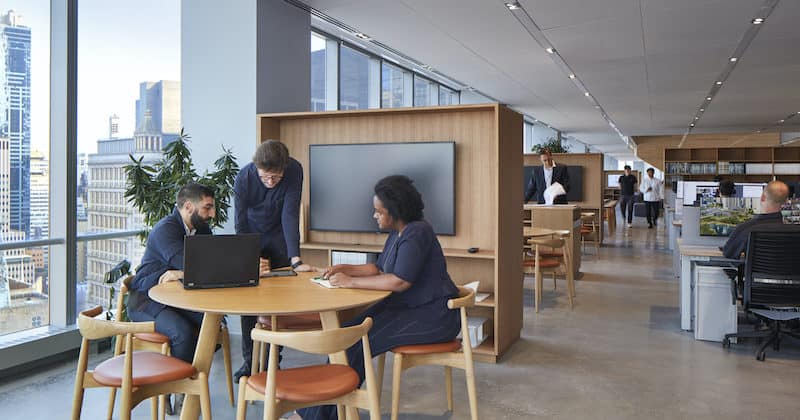
SOM Selects Aircuity Platform for New 7 World Trade Center Headquarters
Global architecture firm Skidmore, Owings & Merrill (SOM) has installed the Aircuity ventilation optimization platform in its new headquarters at 7 World Trade Center (WTC) in New York. SOM selected the Aircuity platform for its ability to optimize ventilation and deliver a healthier and more productive indoor environment, as well as Aircuity’s ongoing indoor air quality (IAQ) analytics which provided key insights about health and safety when traveling in space during the pandemic.
“SOM is one of the world’s leading architecture, interior design, engineering and urban planning firms, and its selection process for its headquarters is focused on cutting-edge technologies that provide the best energy efficiency, health and productivity benefits,” said Dan Diehl, CEO of Aircuity. “Aircuity is proud to have been selected by a leader in the research and development of specialized technologies, new processes and innovative ideas.

When SOM set out to design its new headquarters, it focused on the environment while prioritizing employee health and safety. SOM is pursuing WELL certification from IWBI and has worked with Aircuity’s distribution partner, SRS Enterprises. This has helped SOM integrate Aircuity’s cutting-edge technology and earn the required points in one of WELL’s biggest categories, the Air Concept. This allows the company to optimize ventilation and provide a healthy and productive environment for occupants while reducing carbon emissions.
As part of the WELL Building certification, Aircuity measures, controls and reports CO2, particulates, dew point and TVOCs using science-based healthy building parameters. SOM attempts to earn WELL points for displaying air quality data for building occupants, using Aircuity’s API to pull points into specially designed WELL dashboards displayed in the lobby .
Data from Aircuity was also used to carefully track CO2 levels in response to changing occupancy conditions, working hours and conference room bookings as SOM brought people back to the office the last fall.
“The data has helped us better understand the precise impacts of changing occupancy patterns on each space in our office,” said Charles Harris, Associate Architect at SOM. “For example, we were able to correlate changes in CO2 levels in our conference rooms with room bookings for a specific day. Going forward, we look forward to using this knowledge to design workspaces with the healthiest indoor air quality possible. »
SOM will continue to closely monitor the IAQ data of the Aircuity platform, while benefiting from its sustainable and optimized ventilation. Click here to read the full case study on the SOM project.

Comments are closed.